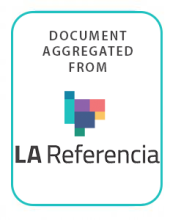Land Library
Bienvenido a la biblioteca de Land Portal. Explora nuestra amplia colección de recursos de acceso abierto (más de 74.000), que incluye informes, artículos de revistas científicas, trabajos de investigación, publicaciones revisadas por pares, documentos jurídicos, vídeos y mucho más.
/ library resources
Showing items 118 through 126 of 4536.More than 80 percent Canadians live in cities with almost one-quarter of country’s total population living in the Greater Golden Horseshoe (GGH) area. The GGH stretches in a curve around the western side of Lake Ontario with the City of Toronto occupying the northern side of the horseshoe.
The dynamics of urbanization and growth of the Latin American city is due to different geographical, economic, and social factors.
Access to safe water and sanitation and sound management of freshwater ecosystems are at the core of sustainable development.
The Voluntary Guidelines on the Responsible Governance of Tenure of Land, Fisheries and Forests in the Context of National Food Security explicitly mention pastoralists as users of the Guidelines and as targets of capacity building.
Low productivity cattle ranching, with its linkages to rural poverty, deforestation and greenhouse gas (GHG) emissions, remains one of the largest sustainability challenges in Brazil and has impacts worldwide.
Determina el cambio en el uso de la tierra y la fragmentación de las zonas boscosas en el Corredor Biológico Lago Arenal Tenorio (CBLAT), en el periodo 2000 – 2017. Se utilizó imágenes del programa Landsat, a las cuales se les aplicó corrección radiométrica y atmosférica.
Universidad Nacional Agraria La Molina. Escuela de Posgrado. Maestría en Bosques y Gestión de Recursos Forestales
El “huarango” (Prosopis pallida), es una especie vegetal que crece en las partes más secas a lo largo de la Costa del Pacífico y algunos sectores de la región andina del Perú, soportando un alto grado la deforestación debido a sus múltiples usos como alimento, forraje, abono, madera, medicinal, e
The Soil Organic Carbon Mapping cookbook provides a step-by-step guidance for developing 1 km grids for soil carbon stocks. It includes the preparation of local soil data, the compilation and pre-processing of ancillary spatial data sets, upscaling methodologies, and uncertainty assessments.





